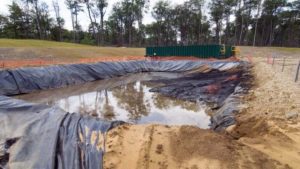
On February 11, 2022, PA State Representative Timothy Bonner introduced House Bills (“HBs”) 2338 and 2339 to protect communities from the dangers of landfills. However, the bills’ language will make it so that rural communities bear the brunt of urban and suburban waste.
The bills are straightforward. HB 2338 prohibits the new construction of a landfill within three miles of the border of a municipality with at least 1,000 residents per square mile, while HB 2339 prohibits the new construction of landfills within 2,500 feet from an occupied dwelling. These seem like they could be good things, right?
Then, consider the population of smaller, rural counties like Washington and Greene. Washington County has a population density of 244.3 people per square mile, but the city of Washington has a population density of 4515.4 people per square mile. Greene County has a population density of 62.4 people per square mile. After looking at these numbers, it is evident that all new landfills will have to be constructed in rural communities. Combine the population density restriction with the feet-from-dwelling restriction that requires landfills to be built almost a ½ mile from occupied structures, and it ensures that they will be constructed close to our farms and areas that are already disproportionately affected by coal mining and fracking.
Landfills are integral to our current waste disposal system, so not many people think about their potential health and safety impacts, but that does not mean they do not exist. In fact, landfills can be very dangerous to our health and the environment. The average landfill is about 600 acres, which is equal to about 453 football fields. Building new landfills in rural, non-developed areas means that 453 football fields worth of wildlife habitat or farmland will be destroyed. Additionally, landfills release methane gas – one of the most potent greenhouse gasses. Living within one mile of a landfill is correlated with a 12% increased risk of congenital malformations in children, and property values of land adjacent to the landfill see a 12.9% decrease in land value.
One of the more troublesome aspects of landfills is their leachate. Leachate is formed when rain falls on a landfill, seeps through the waste and gathers dirt and chemicals from our garbage, and settles at the bottom of the landfill. Currently, there are two primary ways that leachate is treated. One way is that it can be treated on-site and then discharged into a nearby body of water. Second, the leachate is collected and sent to wastewater treatment plants, where it should be cleaned before it is released into our waterways. However, it is not always known what material a landfill receives. This could result in a treatment facility receiving leachate that it is not equipped to treat, releasing potentially polluted water into our rivers, lakes, and streams.
The negative impacts of landfills will only compound with the negative effects that rural communities already experience from fracking. While typical leachate is dangerous in itself, leachate in fracking communities has been linked to radioactive material. Radioactive materials are natural, they exist deep in the Earth all around the globe, but the Marcellus Shale region has higher levels of radioactive materials than most. When fracking occurs, this radioactive material is brought to the surface in both liquid and solid form as part of the waste. In Pennsylvania, this waste is not considered hazardous, so the solid form is trucked to our landfills and disposed of in the same way as the trash you throw away every week. This causes the leachate in the landfill to become radioactive, which is then sent to wastewater treatment facilities. The wastewater treatment facilities are then unable to remove the radioactivity, or even to test for it, and the contaminated water is released back into our waterways: These waterways, which we rely on for recreation, drinking, and growing food, are now contaminated with radioactive waste. Putting more landfills in fracking communities will only exacerbate the problem.
In conclusion, while HBs 2338 and 2339 may have been drafted with the intention of protecting citizens from the adverse effects of landfills, they will actually compound the negative impacts of the oil and gas industry that are already experienced by rural communities, including increased exposure to radioactivity and waste. CCJ is closely following both bills and will be providing updates as necessary.

